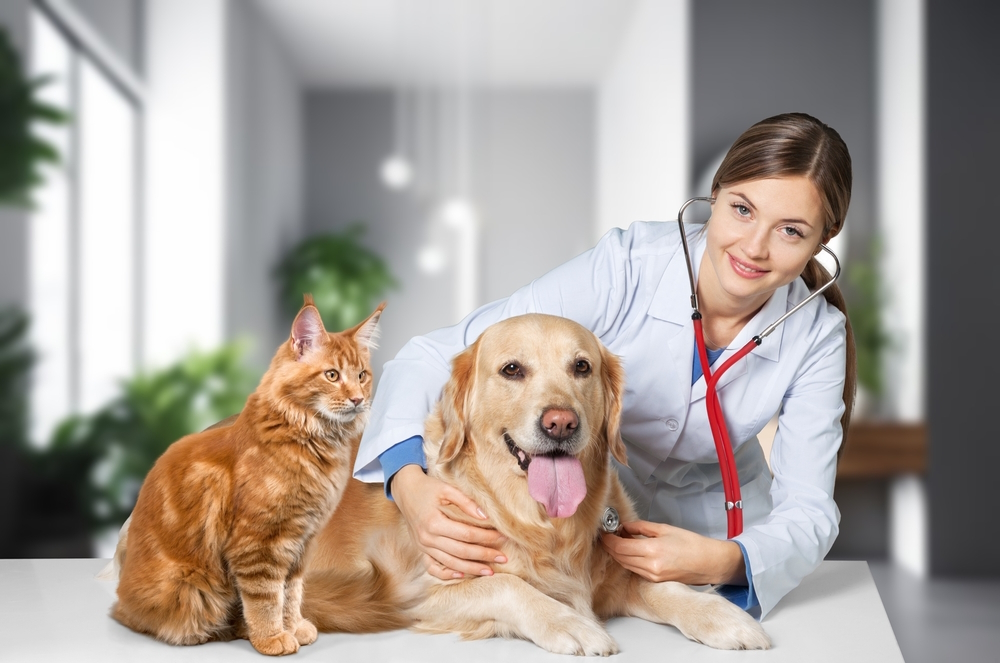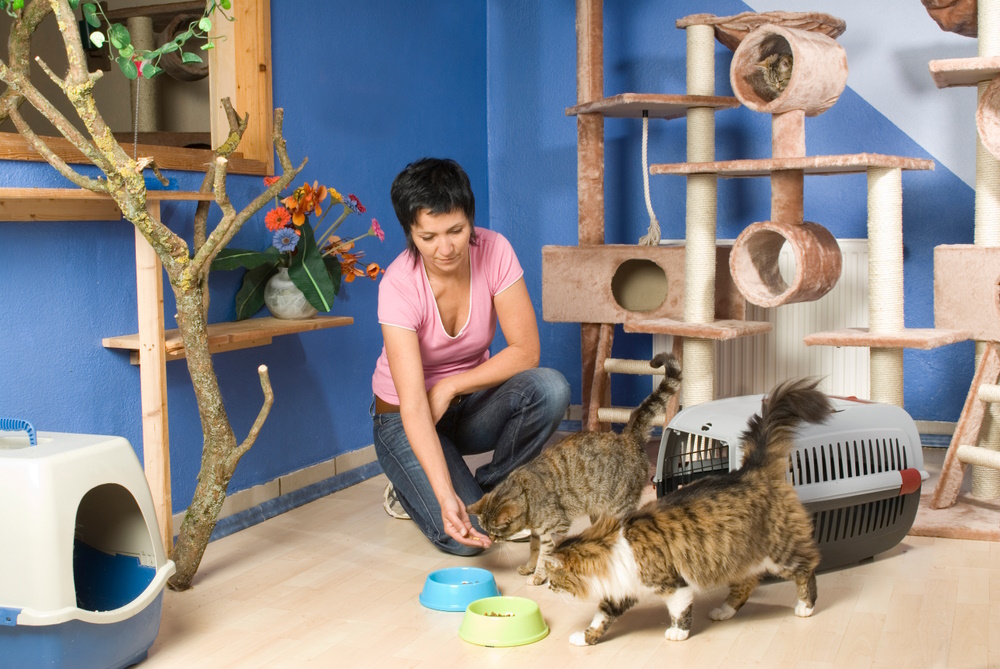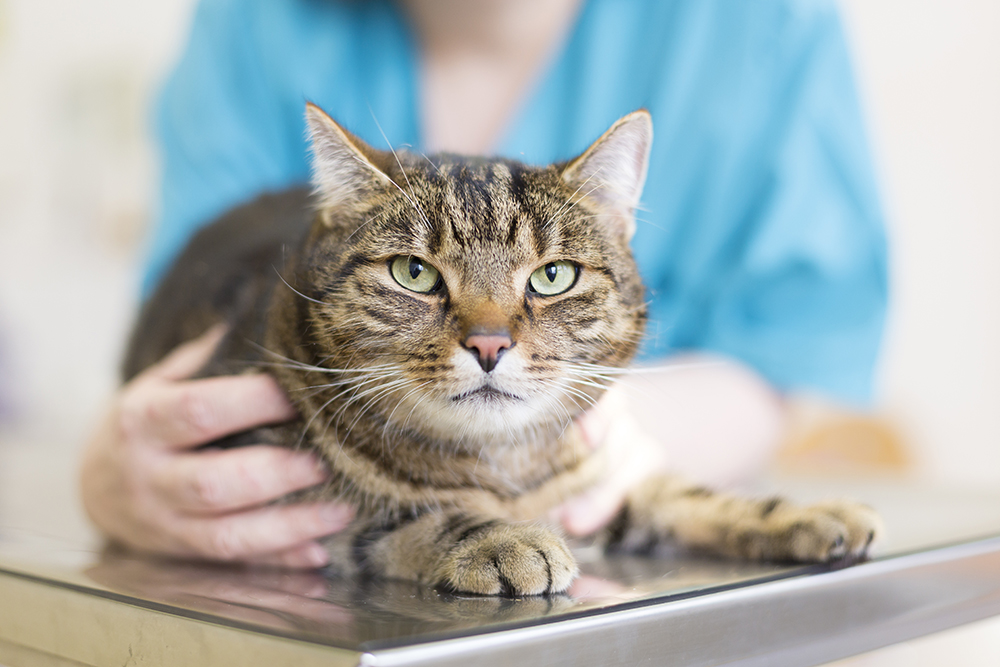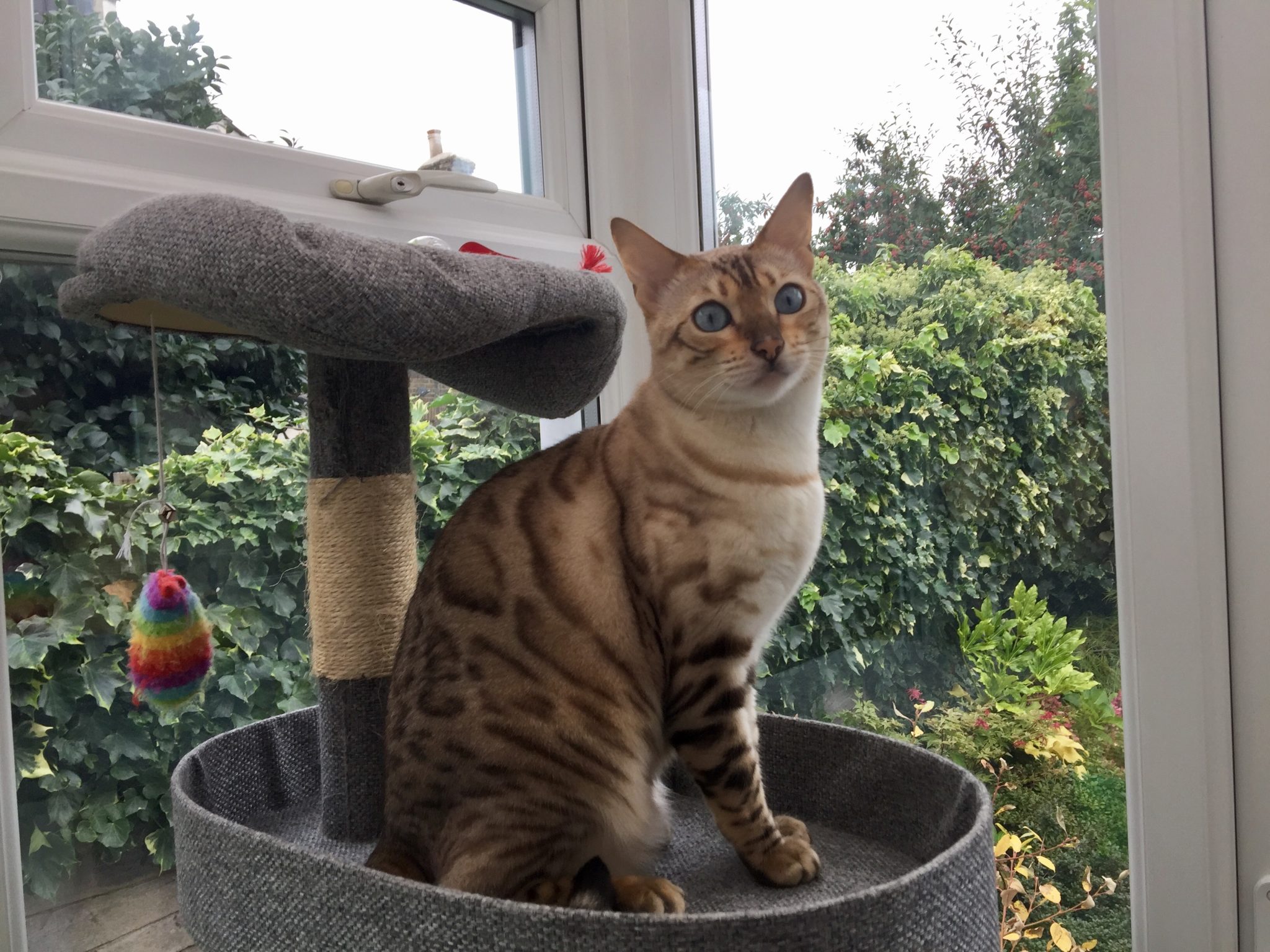- September 6, 2024
Five Freedoms of Animal Welfare: How Vets Apply Them to Cats

The information is current and up-to-date in accordance with the latest veterinarian research.
It may be hard to imagine a time when drafting the principles of basic animal care was necessary. Sadly, the inhumane treatment of the country’s livestock prompted a 1965 British parliamentary inquiry into their conditions. It eventually led Professor John Webster of the now Farm Animal Welfare Council to draft what would become the Five Freedoms of Animal Welfare. Professor David Mellor expanded the concept in 1994 with the Five Domains.
The lists might seem like common sense to many pet lovers today, but they needed to be articulated to provide a framework for scientific advancement and future policies. Today, they serve as a global model for organizations like the American Society for the Prevention of Cruelty to Animals (ASPCA). They are supported by federal legislation like the Animal Welfare Act of 1966.

How Do the Five Freedoms of Animal Welfare Work?
The application of the Five Freedoms of Animal Welfare is the providence of the organizations adopting its principles. They include the following:
- Freedom from hunger or thirst
- Freedom from discomfort
- Freedom from pain, injury, or disease
- Freedom to express normal behavior
- Freedom from fear and distress
While they were written with livestock in mind, they also apply to pets and any animals in human care. We can interpret the specifics based on the species. The first freedom is self-evident: Cats should have food and fresh water available at all times. The second, as defined by the ASPCA, includes shelter and a comfortable resting area. For felines, it can mean a covered space or even a box. Research supports their suitability for stress reduction.
The third freedom involves appropriate veterinary care as necessary, with the goal of prompt treatment. The fourth freedom may mean something like providing a scratching post for a cat, for example, as being able to scratch is a physical need and a means of communication. The fifth freedom builds on the previous ones and perhaps is the most challenging of the freedoms. As an example, cats despise changes in their routine, which can manifest as the signs of an illness.
The Five Freedoms of Animal Welfare are subject to interpretation based on the individual animal. For example, some felines are so laidback that little phases them. Some breeds, however, like the Russian Blue, are naturally more fearful than others, making the fifth freedom particularly challenging for these animals. Early weaning before 8 weeks is another factor affecting a cat’s welfare, correlating with more problematic aggressive behavior.

What Are the Five Domains of Animal Welfare?
The goal of the Five Freedoms of Animal Welfare was to raise awareness about these issues. However, values change. It may have been unthinkable to pamper cats as we do now back when Webster drew up the document. These changing ideas inspired Professor David Mellor and Dr. Cam Reid to update them based on today’s mores. Hence, they published the Five Domains of Animal Welfare.
They include the following:
- Nutrition
- Environment
- Health
- Behavior
- Mental State
The first three are Survival-Related Factors. The fourth involves Situation-Related Factors. The fifth is the Affective Experience Domain. Unlike the Five Freedoms of Animal Welfare, the domains provide specific examples of do’s and don’ts for each realm. They include details like “A balanced diet,” and “Good fitness level.” Regular updates are part of the model’s application.

Where Are the Five Freedoms and Domains Used?
We mentioned many organizations adopting the Five Freedoms of Animal Welfare. That underscores the need they fulfilled. While they may seem common sense, getting them in black and white was a significant step forward, and animals have benefited. The ASPCA uses the five freedoms to raise awareness with public service campaigns. Others, like the World Organisation for Animal Health, make them part of their mission.
Mellor and Reid intended the Five Domains of Animal Welfare to be guidelines, recognizing the subjective nature of interpreting animal emotions. They also rely on current scientific knowledge, which changes with growing research over time and lends credibility to this approach by considering internal and external factors affecting the perception of welfare to the observer and animal.
Of course, cats are different animals than livestock or dogs. An effective view of animal welfare must incorporate these facts into the model. Hence, you’ll see the five freedoms applied differently, reflecting these nuances. The five domains go one step further by recognizing the common survival denominators while leaving room for customization based on what group is using the Five Freedoms of Animal Welfare.
Veterinarians can use this information to educate their clients about feline needs. Stress and discomfort often hover under the radar. After all, felines are masters at hiding any signs of distress. The Five Freedoms of Animal Welfare provide a framework for vets to work with pet owners to ensure cats get what they need to survive and thrive. After all, they aren’t the aloof creatures some may think of them. They also need compassion.
In recent years, veterinarians around the world have been expanding their knowledge and updating their practices to include a “fear-free clinic” approach. For cats, this involves details like eliminating waiting times, adding multi-cat calming pheromones, placing anti-slip mats over the examination table, having a gentle and considerate approach when handling them, and providing them with sedation, a cat-specific area that is dog-free, and a covered recovery area, just to name a few courtesies. “Fear-free” is a huge movement in the veterinary care world and many practices are obtaining a “Fear-Free Practice Certificate” after actualizing their space and operations to consider all the details that help make the experience less stressful for felines and other pets seen in the practice.

The Benefits of the Five Freedoms of Animal Welfare
The benefits of the Five Freedoms of Animal Welfare are clear: They stress the importance and responsibility of caring for animals. After all, it is a privilege to own a feline. Unfortunately, some people may simply be unaware of what good welfare entails. They aren’t intentionally cruel, but they may not know what it means in all areas. The five freedoms spell it out clearly.

Frequently Asked Questions (FAQ)
How Do the Five Freedoms of Animal Welfare Deal With Enrichment?
These provisions are covered with normal behavior. That means providing enough space and interactions with cohorts if appropriate. Interactive toys are an excellent way to fulfill this need. Essentially, we must allow cats to be physically and mentally stimulated for a healthy lifestyle.
What Else Does Freedom From Discomfort Cover?
This element is critical for cats, and that includes providing them with whatever it takes to keep them from living in an uncomfortable or potentially dangerous situation or environment, including a space away from dogs and their barking, or doing what it takes to get them recovered after an injury or illness.

Are There Limits to the Application of the Five Freedoms of Animal Welfare?
The Five Domains of Animal Welfare address these concerns. For example, both cover diet. However, feeding a cat to obesity is not in the kitty’s best interest. Likewise, a comfortable space is reasonable but doesn’t preclude interaction with people.

A Quick Reference Guide
| The Five Freedoms | Examples |
| Freedom from hunger or thirst | Water availability; clean water; a diet appropriate for the animal’s life stage |
| Freedom from discomfort | Comfortable bed with a quiet place to rest |
| Freedom from pain, injury, or disease | Good body condition; regular vet check-ups |
| Freedom to express normal behavior | Regular playtime and mental/physical enrichment |
| Freedom from fear and distress | Cats housed separately from dogs and excessive barking |

Conclusion
The Five Freedoms of Animal Welfare identified a problem and offered a solution for livestock stressed by their living conditions. Its principles cross species lines on several fronts. The Five Domains of Animal Welfare are the updated version, with more specific guidelines and information to help caregivers make informed choices, with the latitude to adapt them for different species, like our feline companions.
Featured Image Credit: Billion Photos, Shutterstock
Tags
What do you think?
Related Articles

New Puppy Checklist: Gear You’ll Need for Your New Dog
Getting a new puppy is really exciting, but before you welcome them home, it’s important to prepare your space for them. Since puppies need a

How Big Do Mini Poodles Get? Vet Reviewed Average Weight & Growth Chart – Dogster
The information is current and up-to-date in accordance with the latest veterinarian research. Learn more » When you buy a Miniature Poodle, you might not

Can Police Dogs Smell Nicotine? Vet Verified Facts & Info – Dogster
The information is current and up-to-date in accordance with the latest veterinarian research. Learn more » While cigarette sales have been declining steadily for decades,

How Old Is 5 in Dog Years? Vet-Approved Guide to Each Size of Dog – Dogster
The information is current and up-to-date in accordance with the latest veterinarian research. Learn more » A common method for calculating a dog’s age is

